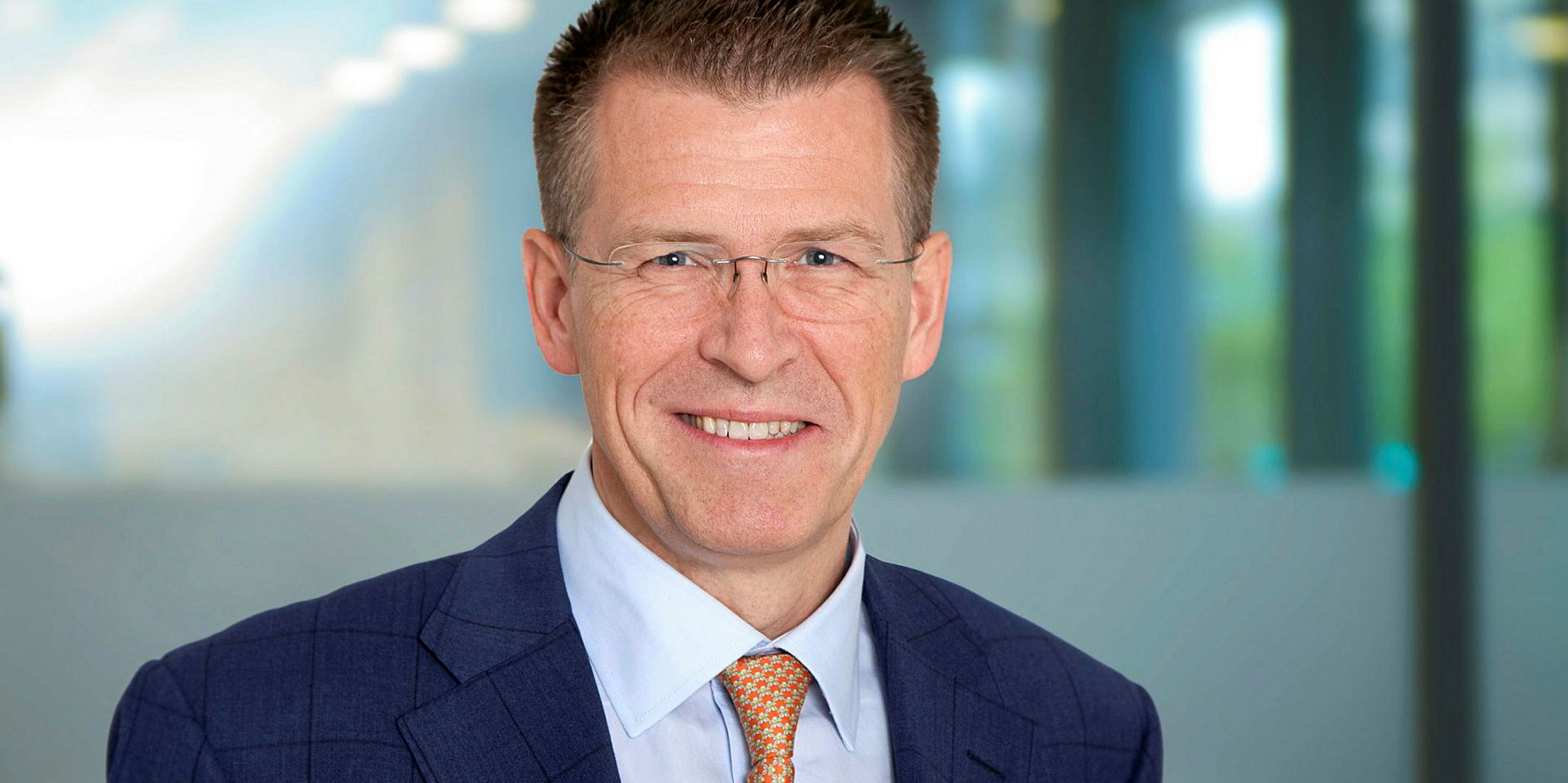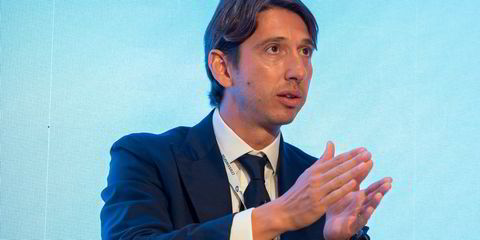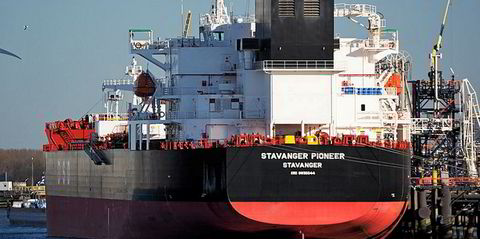Ivar Hansson Myklebust will soon complete six months in his new job as chief executive of tradition-rich car-carrier transporter Hoegh Autoliners, a company facing challenges because of depressed freight rates and overcapacity, and as a result of extensive investigations for price fixing.
Taking over from Ingar Skiaker at the car-carrier owner, he now also works for chairman Leif O Hoegh as a director of Leif Hoegh & Co, the Hoegh family’s holding company.
In his first interview since he took the helm, Myklebust outlines some of the challenges facing the company.
Price fixing
Like others in the vehicle-carrier business, the company has been facing investigations in 13 different jurisdictions.
Oslo-based Hoegh Autoliners reached a settlement in September 2017 with the US Department of Justice following a five-year investigation into price fixing that resulted in the company paying a $21m fine.
Myklebust, 50, says: “This is a case we should definitely have done without. We have learned from it. The whole complex had made it clear what kind of cooperation market players can have with each other. Switching cargoes and chartering ships is clearly still allowed.”
Hoegh Autoliners now appears to be getting closer to the end of these challenges and the company has not received a conviction in jurisdictions outside the US.
“We are out of it now, or there are reasons to believe we will get out of the other cases,” Myklebust says.
Poor market
Overcapacity and tough competition has meant poor financial results for Hoegh Autoliners — it logged a pre-tax loss of nearly $224m in 2016 — and the shareholders, which led to Denmark’s AP Moller-Maersk and Leif Hoegh & Co of Norway injecting more equity. The same year, the company postponed repaying banks.
It takes time to change the situation, and it is unlikely that the privately owned company will show figures in the black when it reports its numbers for 2017.
The results will not be available until later this summer, but chief financial officer Ingrid Due-Gundersen says they ended up “slightly better than expected due to a better cargo mix, while 2018 has started slightly worse than expected”.
The company anticipates improvements for both the rest of 2018 and 2019.
“We should be behind the low cycle," she says.
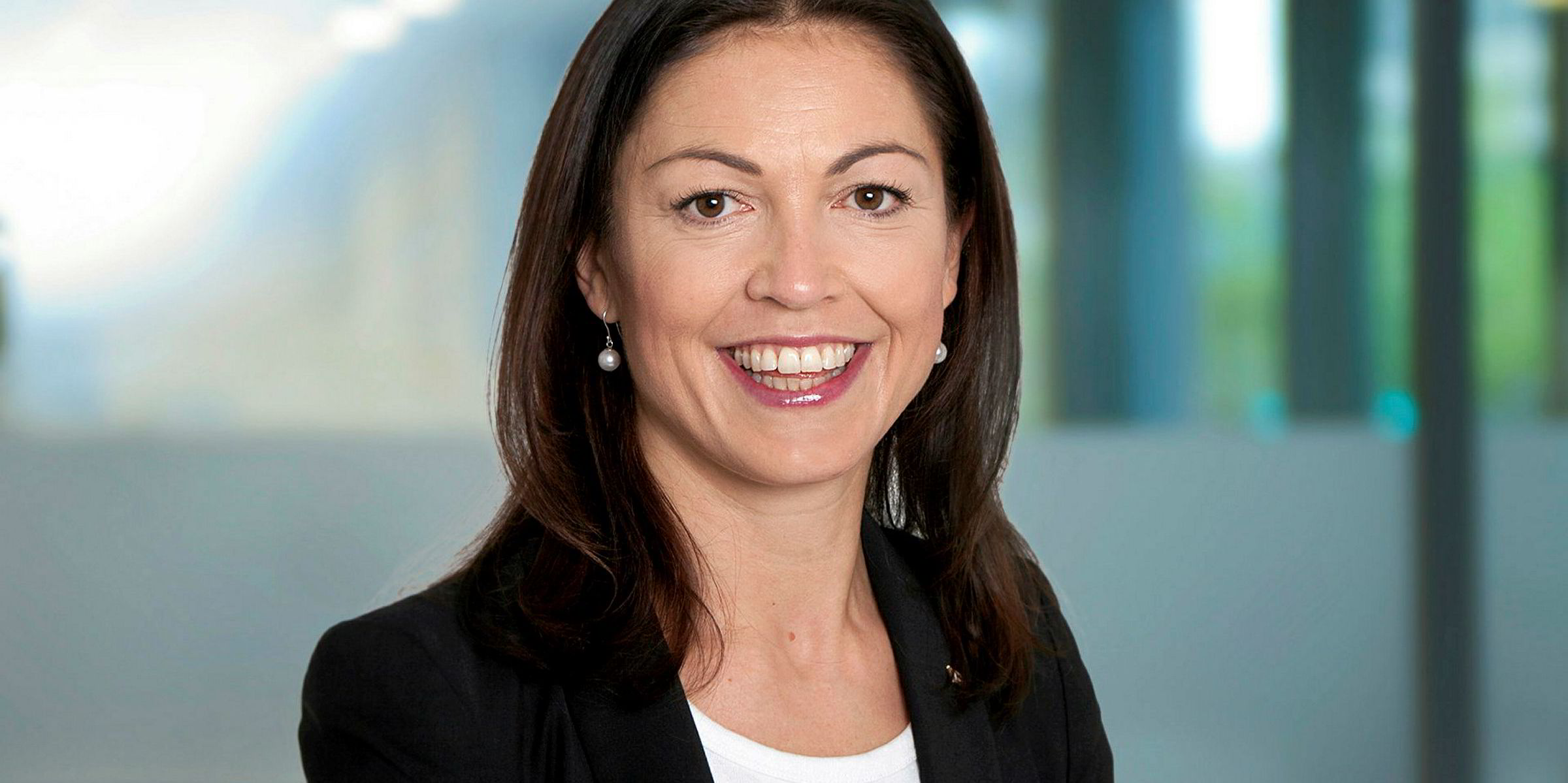
Observers say Hoegh Autoliners has been struggling to get sufficient cargoes for backhaul trips from Asia and that, in general, the company is more dependent on the general trends in the market as it is a relatively small competitor compared with the big Japanese carriers and Wallenius Wilhelmsen and Eukor.
Myklebust insists that with an 8% to 9% market share, “Hoegh Autoliners is big enough to be a global player”.
The outfit lists around 50 ro-ros in operation. Of these, 30 are on the company’s balance sheet, 11 are leased and 10 are on long-term time charters.
The outfit has been through a renewal process for its fleet, taking delivery of six 8,500-ceu vessels from Xiamen Shipbuilding Industry in China, which are the biggest of its kind and very fuel efficient.
Big in India and Mexico
One way that Hoegh Autoliners is responding to the challenges it is facing is by developing new markets and logistics solutions.
Hoegh Autoliners is a market leader on exports from India to the US, Mexico and Europe.
“We have been in India since 1937," Myklebust says. "Hoegh [Autoliners] currently has a market share of some 60% on [the] export of cars for India. For this country, the company expects stable performance going forward.”
But trading patterns are becoming complex and operators can no longer afford to carry cargo one way and not return.
Myklebust has only been at the company since 2014, when he joined as CFO, but he is commercially savvy — and chairman Leif O Hoegh praises him for doing "an excellent job as a commercially minded CFO”.
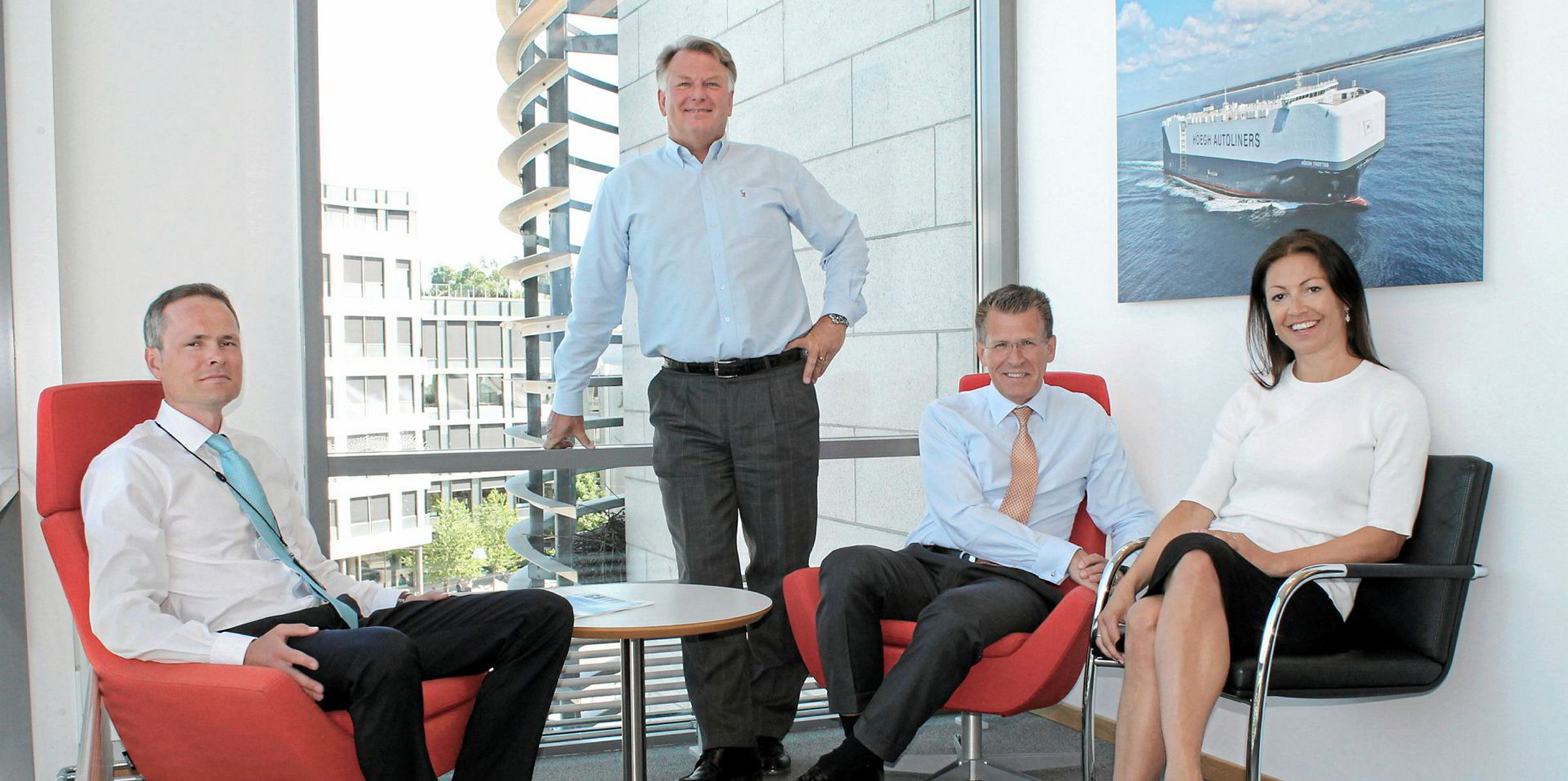
Even if Myklebust admits the industry is complex, he finds it “very entertaining”.
“[In] Africa, for example, the volatility in the raw material prices can directly impact our business,” he says.
The complexity of the business means the company must be focused at all times for developments in the countries it serves.
“In any given day, we may read four different articles in the Financial Times that affect our business,” Due-Gundersen notes.
Hoegh Autoliners has also set up a direct service to Oceania and is a leading player in the Gulf of Mexico, where it is also investing in on-land facilities.
Caring for staff
Myklebust comes across as wanting leadership in the company to be grounded in teamwork. He arrives at the interview with all but one member of Hoegh Autoliners’ management group, and stresses how he needs input from his colleagues for facts and to explain complex issues.
Danish giant Maersk holds 38.8% of the company's shares, but Hoegh Autoliners strongly emphasises its Norwegian heritage. The outfit claims to be the biggest shipowner in the Norwegian International Ship Register with 30 vessels. Myklebust also says the company is a “proud supporter of the maritime trainee programme of the Norwegian Shipowners’ Association”.
Two of its top executives have come through this programme: Due-Gundersen and Espen Stubberud, who is chief of trade and capacity.
Due-Gundersen, 38, started at Hoegh Autoliners as a summer intern in 2002 and has worked at the company ever since.
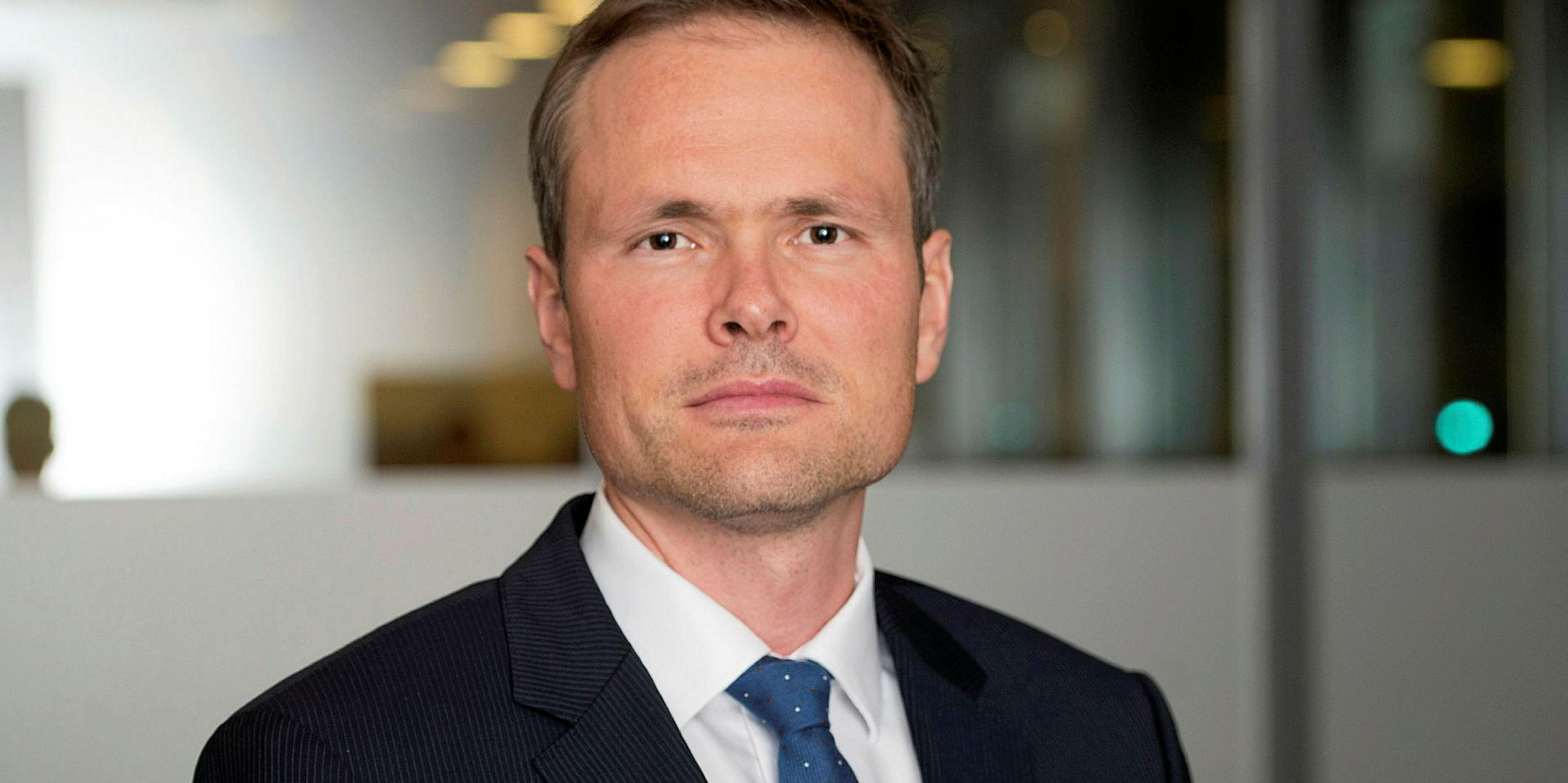
Pioneers in car transport
Myklebust says Norwegian companies have been pioneers in the vehicle-carrier segment, with a long history of car transport.
After Leif Hoegh & Co first began carrying vehicles with lift-on/lift-off vessels, it formed a joint venture in 1970 with compatriot shipowner Ugland that brought the company into the ro-ro business. Hoegh-Ugland Auto Linerscontinued until 2000.
Fellow Norwegian outfit Wilh Wilhelmsen, which, currently with partner Wallenius Lines of Sweden, is a another veteran in the trade. Belships and AWilhelmsen — Myklebust’s former employer — were once also in the ro-ro business.
Danes bring trading culture, Norwegians the finance
Myklebust has a good background for comparing strengths of Norwegian and Danish shipping, having also worked as CFO for Copenhagen-based Norden and having Maersk as a major shareholder of Hoegh Autoliners.
Maersk dominates because of its sheer size, which partly serves as a recruiter of talent for other Danish outfits. He also observes a particularly strong trading culture in Denmark that leads to new companies emerging all the time.
Fewer Norwegian outfits are involved in traditional tankers and bulker shipowning these days as he says they appear to have a taste for specialised shipping.
“And the Norwegians know the capital bit,” Myklebust says.
His own background has been partly banking and finance with Pareto and Nordea, so he still sees himself partly as a banker.
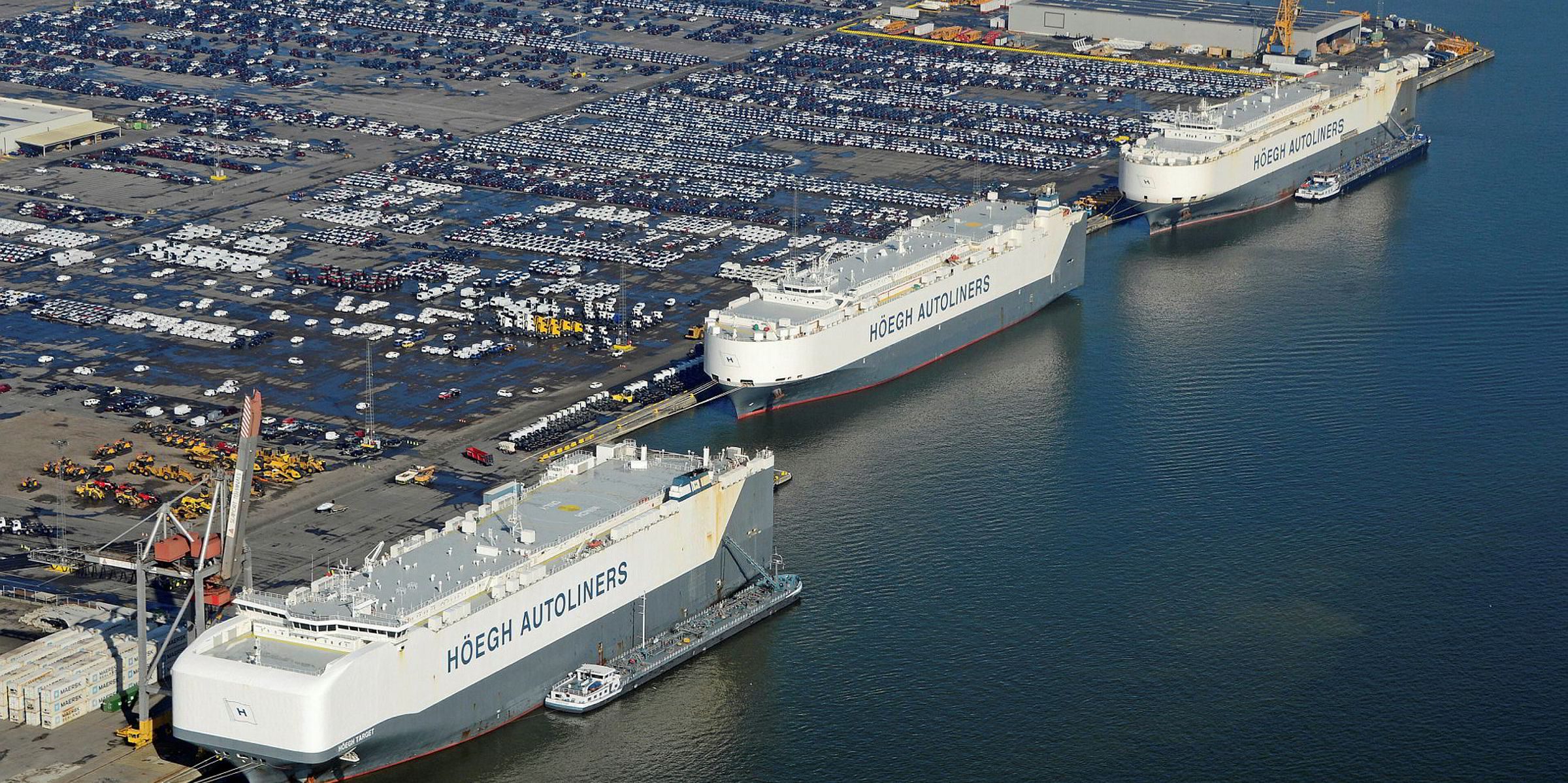
Hails from Syvde
He may have the whole world as a workplace, but Myklebust is proud to have heralded from Syvde, a town on the west coast of Norway with less than 1,000 inhabitants.
“This is were you either go into shipping or the fisheries,” he says.

From this place in the municipality of Vanylven also comes Hugo Skaar, the recently retired chief technical officer of Golar Management and Myklebust's childhood friend. Alf Helge Aarskog, chief executive of John Fredriksen’s fish-farming company Marine Harvest, also hails from Vanylven.
“Syvde is a pearl at the sea, where you ought to take your next holiday in Norway,” Myklebust tells TradeWinds.
